ايرفينغ نورمان & nbsp(1906-1989)

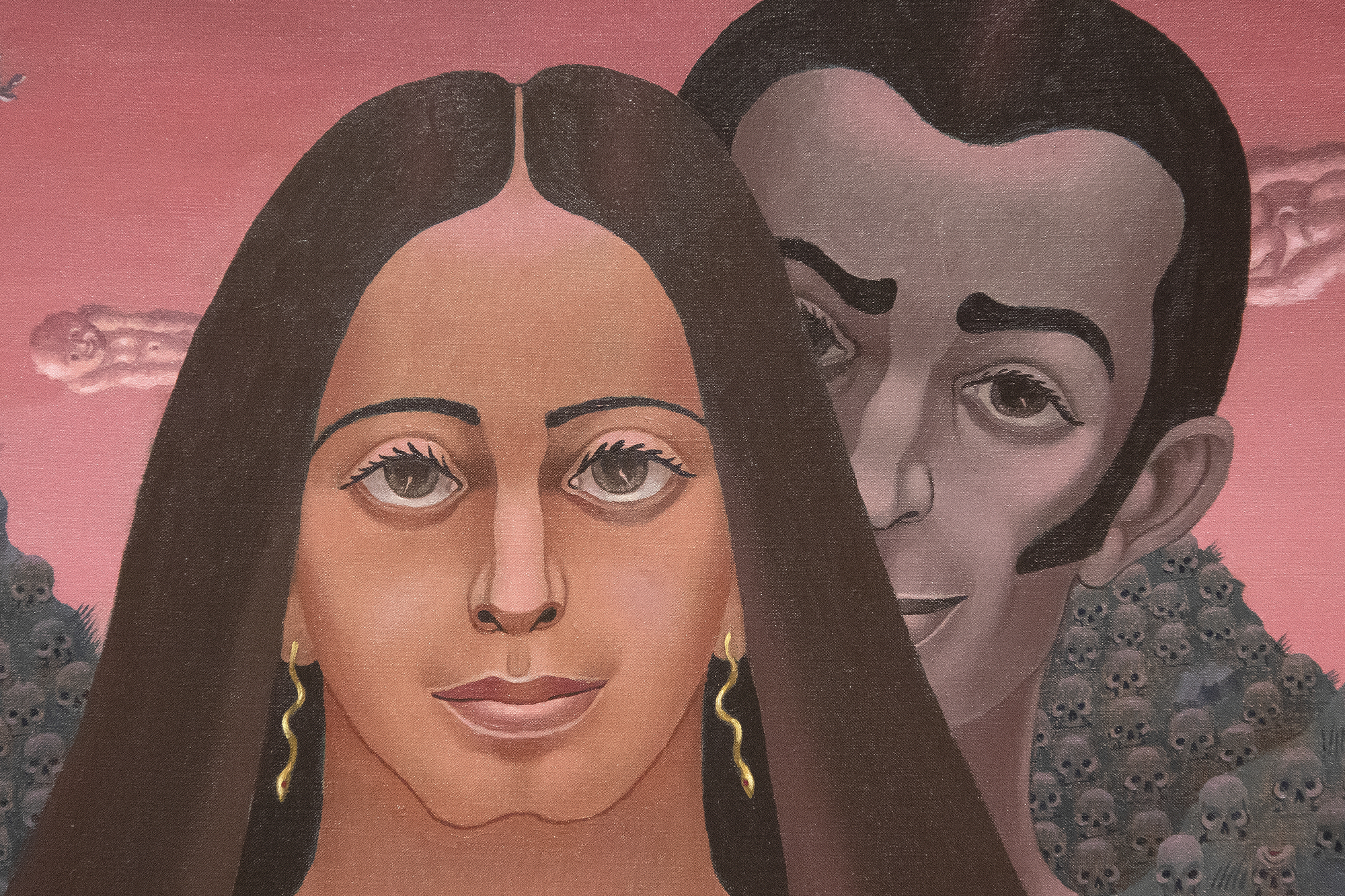
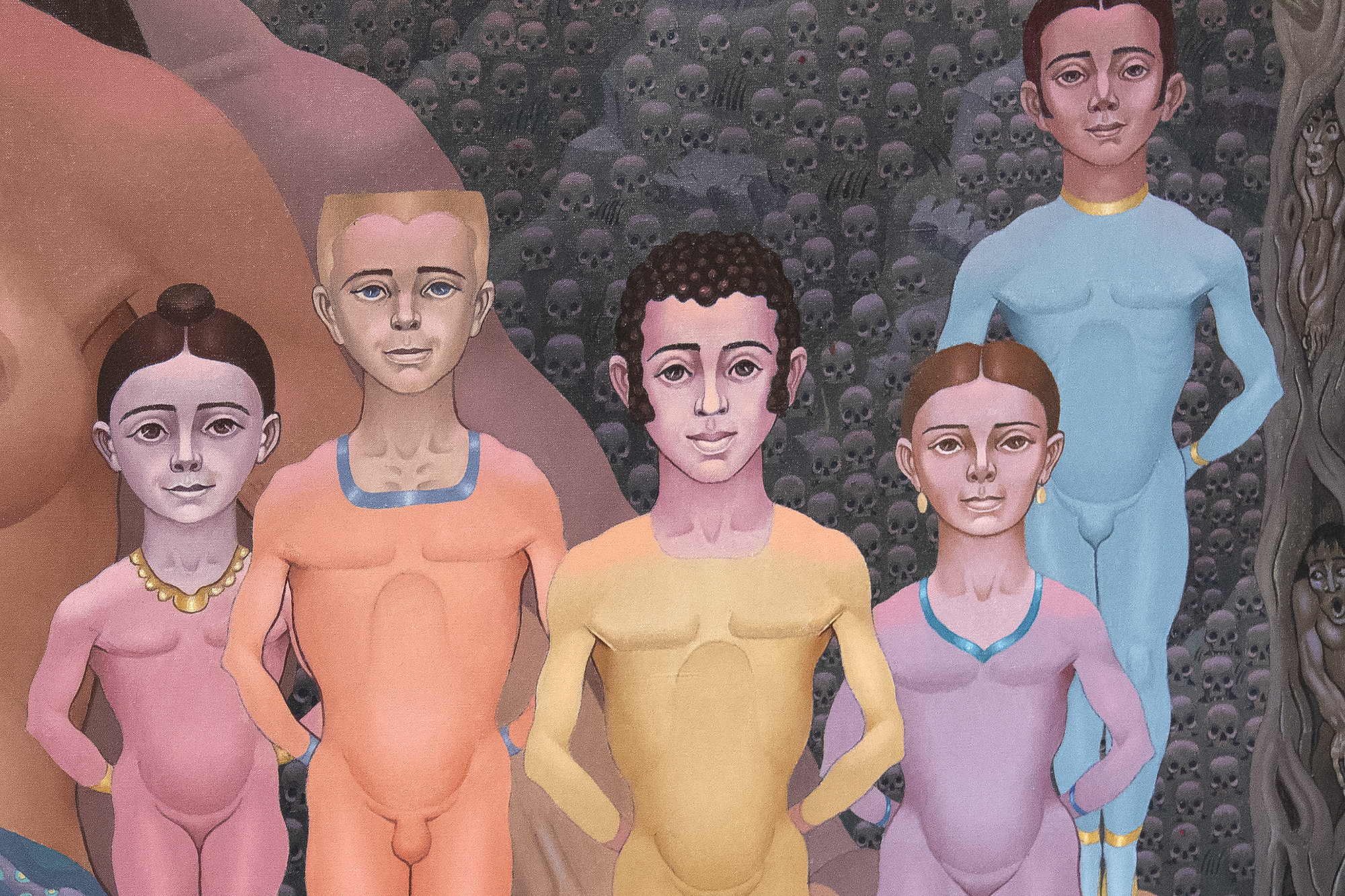
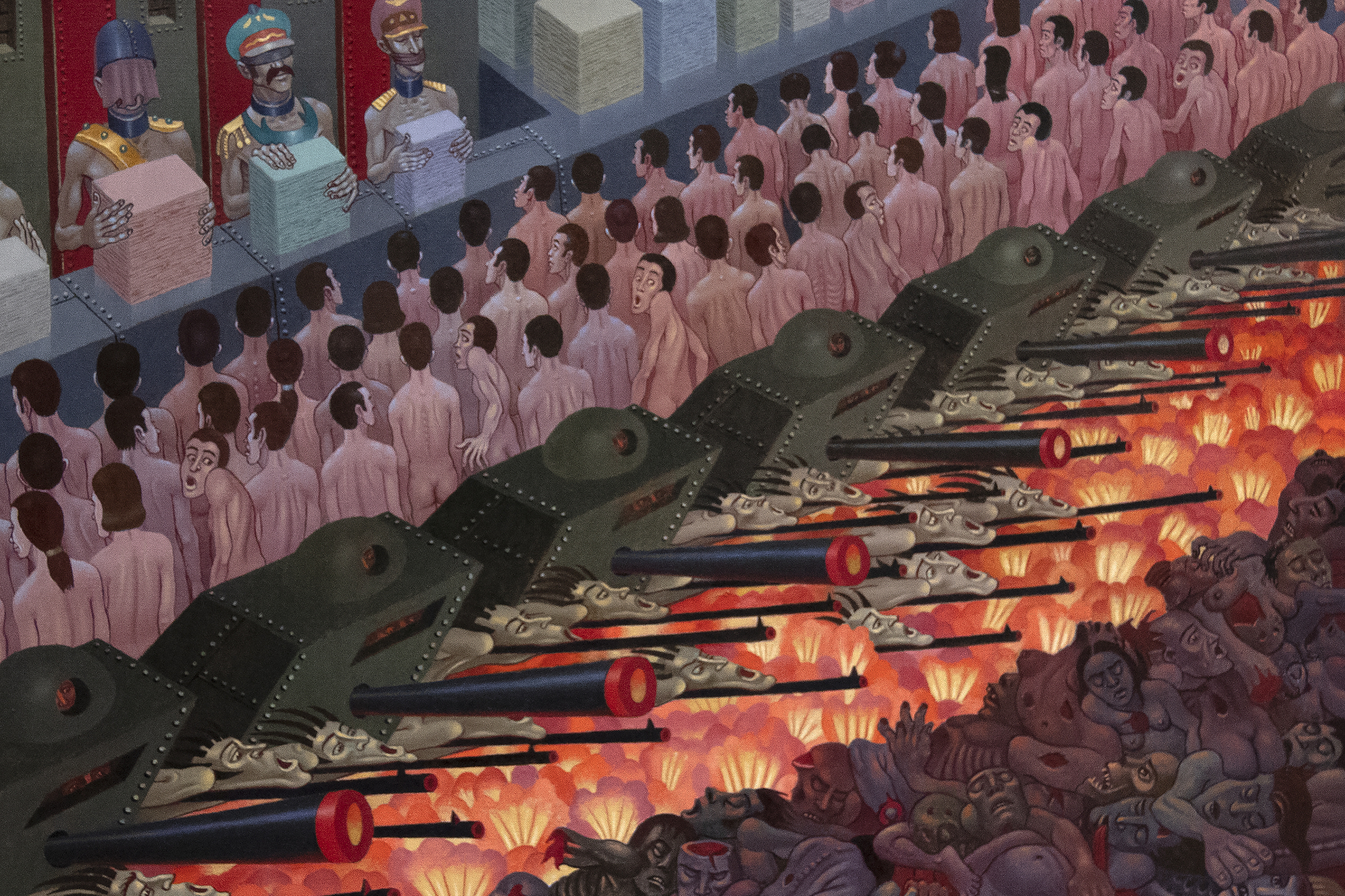
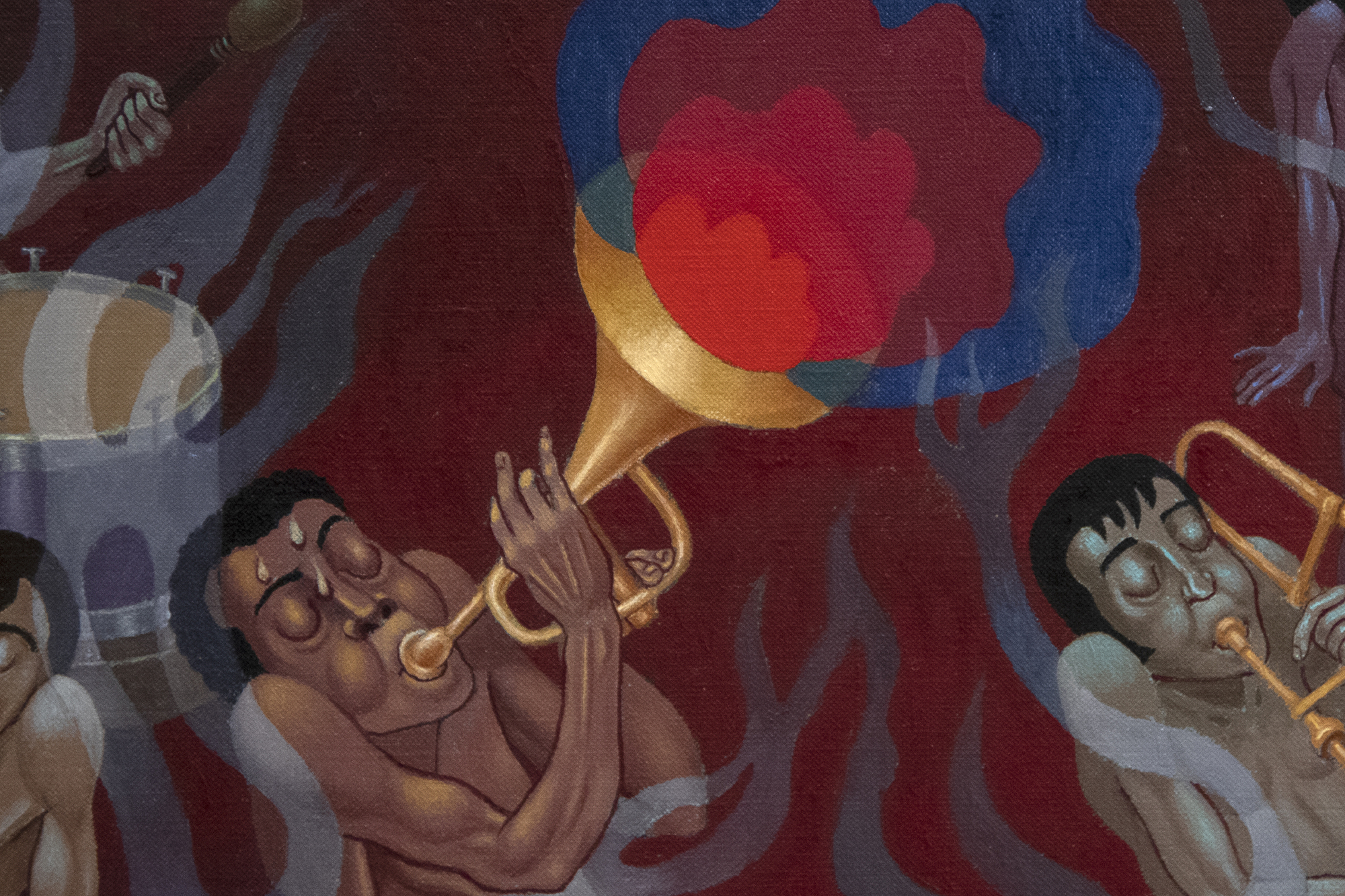

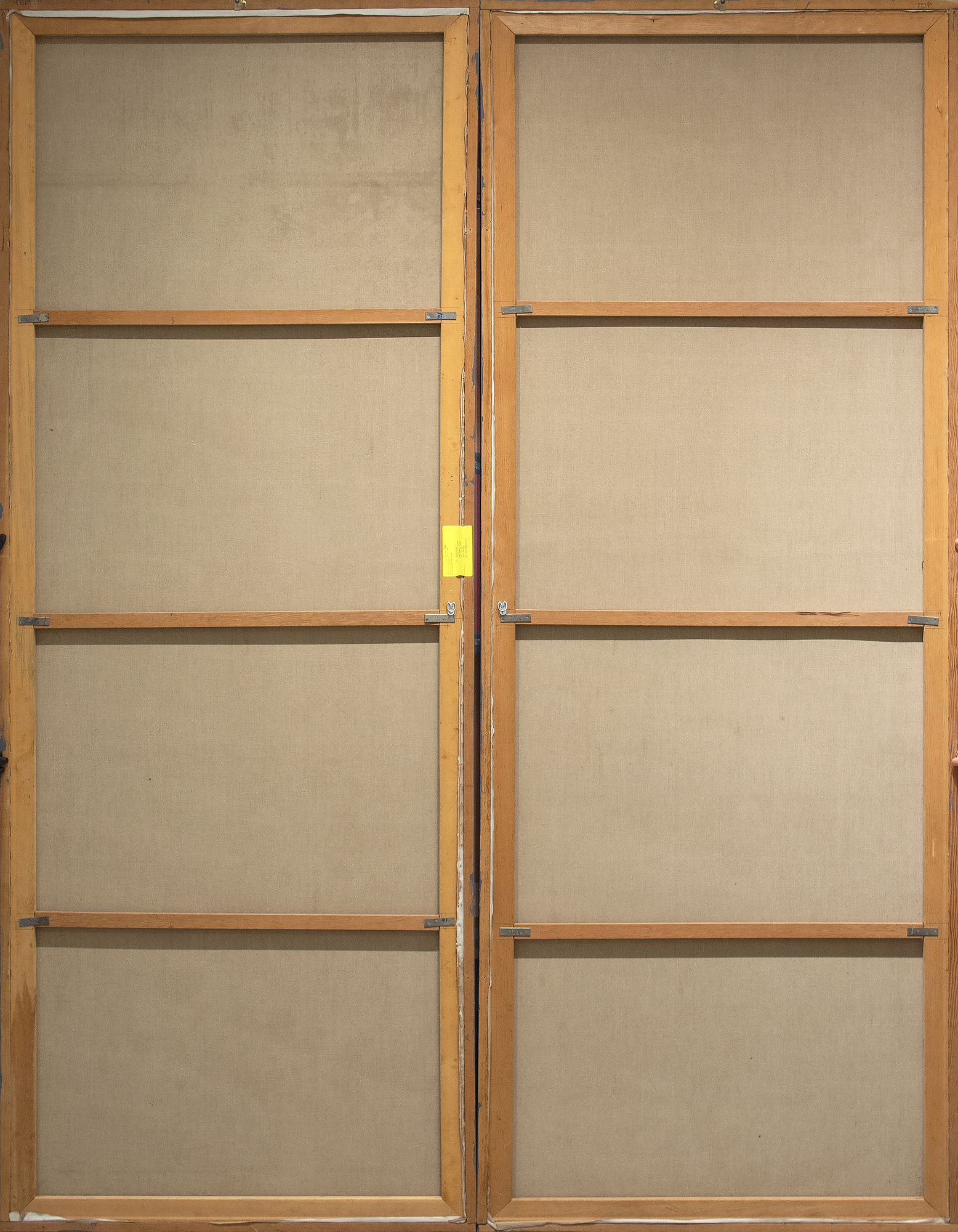
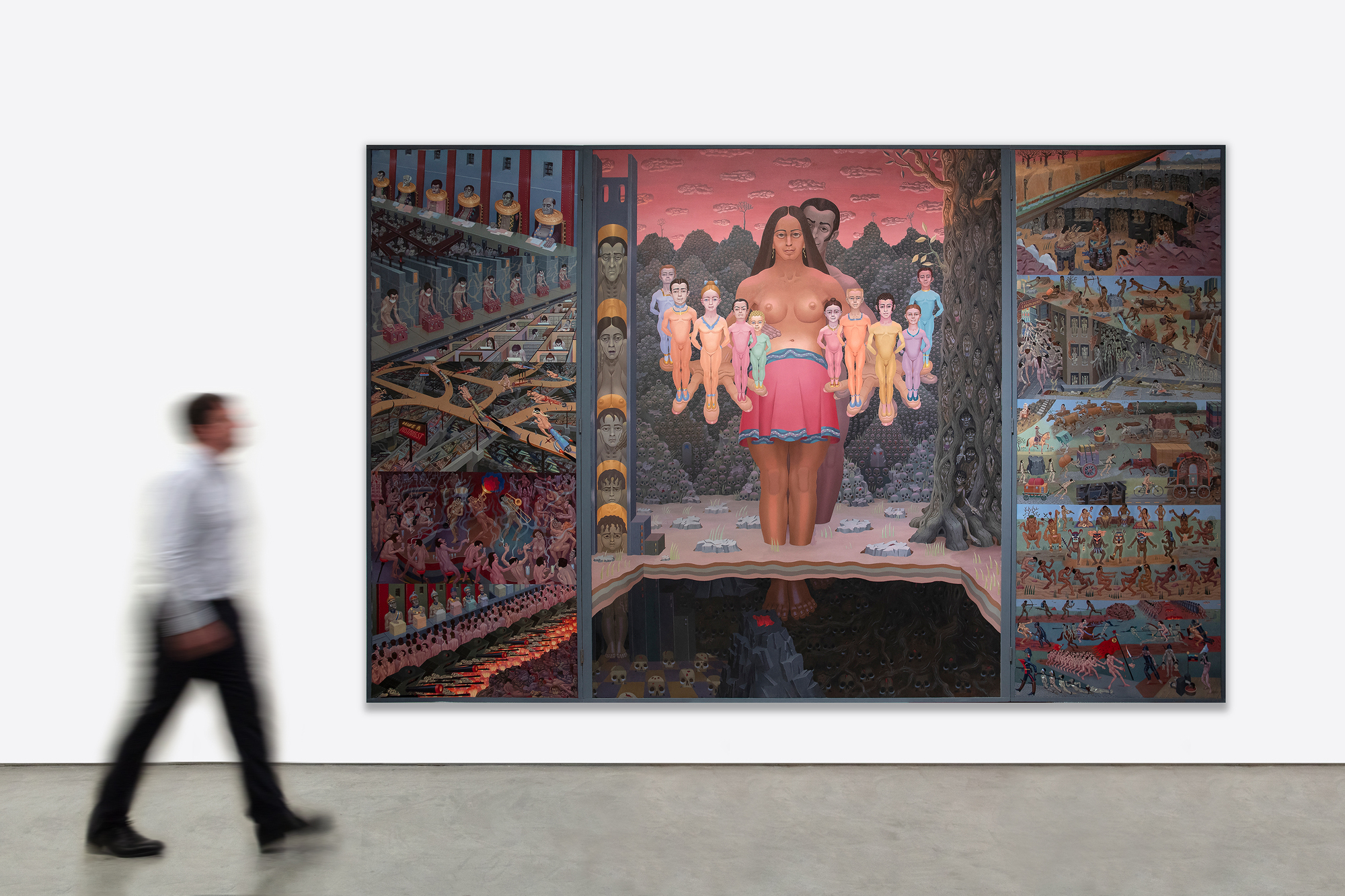
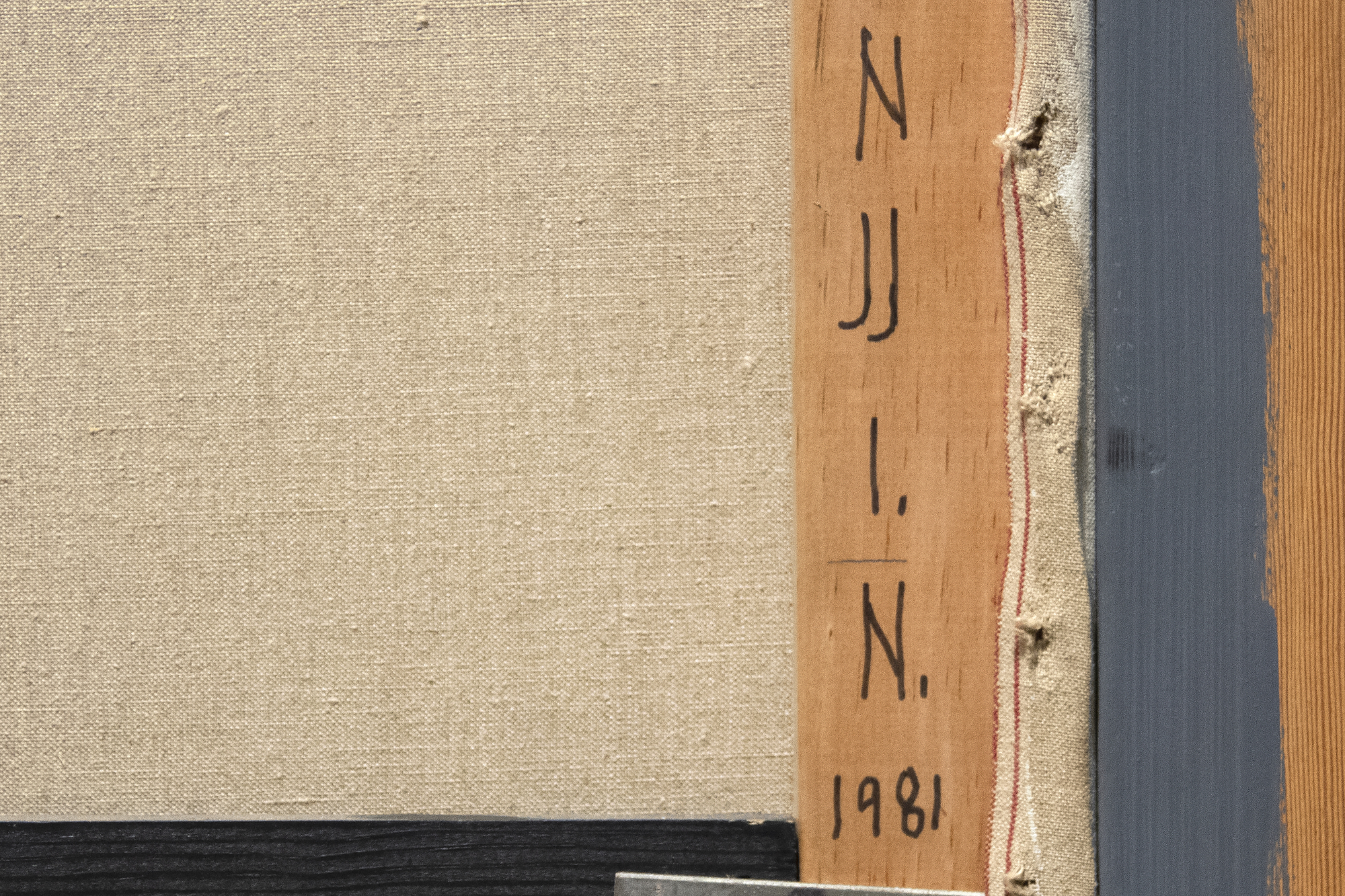

الاصل
متحف كروكر للفنون، ساكرامنتومجموعة خاصة
معرض
متحف البديل 1986، نيويورك2002 كلية سانتا مونيكا
2006 متحف كروكر للفنون، سكرامنتو
2007 متحف باسادينا للفنون كاليفورنيا
2007 ولاية يوتا Univ. نورا إكليس هاريسون متحف الفن
2007 متحف كاتزن بالجامعة الأمريكية، واشنطن العاصمة.C.
الادب
مدينه مظلمة: [ارفينج] نورمندي [سوورليسم] اجتماعيه, [اد.]. سكوت [ا.]. دروع و شعاع يوم (سكرامنتو و بيركلي: [كروكر] فن متحف و [هدوم] كتب, 2006), [بغ.]. 199السعر1,250,000
شخصيات إيرفينغ نورمان، التي تتلاعب بها بيئتها ومساحتها المادية، هي من أسلوب يبالغ في مرونة الشكل البشري للتأكيد على ضعفها وخضوعها. وتشير هذه المرونة الحرفية والرمزية إلى أن هذه الشخوص تتمدد أو تنضغط أو تلتوي بفعل قوى بيئتها، مما يؤكد افتقارها إلى الاستقلالية والأنظمة القمعية التي تحكم وجودها. وفي حين تعكس هذه الشخوص هشاشتها، فإن خيار نورمان البنيوي في لوحة "الحالة الإنسانية" يخلق تجاورًا صارخًا يحوّل الانتباه نحو اللوحة المركزية. تنضم شخصية نسائية قيادية، ترتفع فوق الإخفاقات والفظائع الكارثية التي حدثت في الماضي، إلى رجل، ليشكلا "زوجين" رمزيين، مما يوحي بالوحدة والمسؤولية المشتركة لرؤية جديدة. يداهما مكبرتان ومقلوبتان إلى أعلى، تقدمان هذين الطفلين كرؤية تقدم الأمل والتجديد للمستقبل. وتعزز هذه الإيماءة، إلى جانب الملابس المستقبلية للشخصيتين الضئيلتين، فكرة المسار البديل - إنسانية أكثر إشراقاً وتطلعاً للمستقبل. تعمل اللوحة المركزية بمثابة عرض مجازي يدعو المشاهد إلى التفكير في مستقبل لم يتأثر بثقل الظلام الذي تخرج منه هذه الشخصيات.
هنا، يؤكد نورمان على رؤية متفائلة، إن لم تكن متفائلة، للأجيال القادمة. ويوحي القرار الهيكلي بتحول متعمد في التركيز: فالمشاهد الأكثر قتامة التي أُحيلت إلى الجوانب تمثل الأعباء التي تحملها هذه الشخصيات في الماضي والحاضر. وفي الوقت نفسه، تجسّد الشخصيات المركزية إمكانات المستقبل الذي تشكله المرونة والتجديد. هذا التجاور يميز لوحة "الحالة الإنسانية" بوصفها انعكاساً لسنوات نورمان اللاحقة، حيث يبرز أمل مخفف ليطالب بالأرضية العالية على ما كان عليه المجتمع الحديث من حرب وفساد مدقع وفساد مدقع وسعي محموم إلى المتعة والآثار اللاإنسانية للمجتمع الحديث.
طوال مسيرته المهنية الطويلة، وقف نورمان شامخاً في قناعاته؛ فقد استدار وواجه اللوحات الكبيرة الفارغة وصمم ورسم مشاهد معقدة ومكتظة بالسكان. أما بالنسبة للاعتراف، فقد برر الوضع - الشهرة أو الثروة التي كانت تخاطر بالطبيعة غير الملوثة لمهمة الفنان. وفي نهاية المطاف، فإن كتاب "الحالة الإنسانية" هو خلاصة حياة نورمان وعمله ودعوة إلى العمل، يحثنا على فحص تواطؤنا في الأنظمة التي صوّرها بوضوح. ومن خلال الحرفية الدقيقة والكثافة المجازية، فإن هذا العمل الفني هو عمل فني رائع يستحق أن يكون متحفًا لا يزال صداه يتردد صداه حتى اليوم، حيث لا تزال مواضيعه وثيقة الصلة بالموضوع كما كانت عندما قام نورمان بإحياء رؤيته بشق الأنفس.


